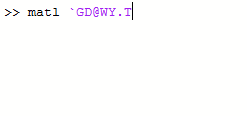Thử thách của bạn là in đầu vào, đợi bất kỳ khoảng thời gian nào, in đầu vào, đợi gấp đôi thời gian bạn chờ ban đầu, in lại đầu vào, v.v. Độ trễ ban đầu phải dưới 1 giờ và bạn phải có độ chính xác +/- 5% trong các lần trì hoãn tiếp theo. Ngoài ra, không có hạn chế về thời gian trì hoãn.
Thí dụ:
Đầu vào : hi.
Đầu ra: hi(tạm dừng 1ms) hi(tạm dừng 2ms) hi(tạm dừng 4ms) hi(tạm dừng 8ms) hi(tạm dừng 16ms), v.v.
Cũng được phép:
hi(Tạm dừng 1 phút) hi( tạm dừng 2 phút) hi(tạm dừng 4 phút) hi(tạm dừng 8 phút) hi(tạm dừng 16 phút), v.v.
Đầu vào phải được cung cấp khi bắt đầu chương trình (STDIN, tham số dòng lệnh, hàm param, v.v.) và sẽ là một chuỗi.
Độ trễ ban đầu không thể là 0.
y=x=>(x&&alert(x),y())sẽ được cho phép về mặt kỹ thuật , nhưng tôi sẽ đánh giá thấp nó.
![đặt [n] thành [1]; mãi mãi {nói [x]; chờ (n) giây; đặt [n] thành ((n) * (2))}](https://i.stack.imgur.com/bAA0P.png)
